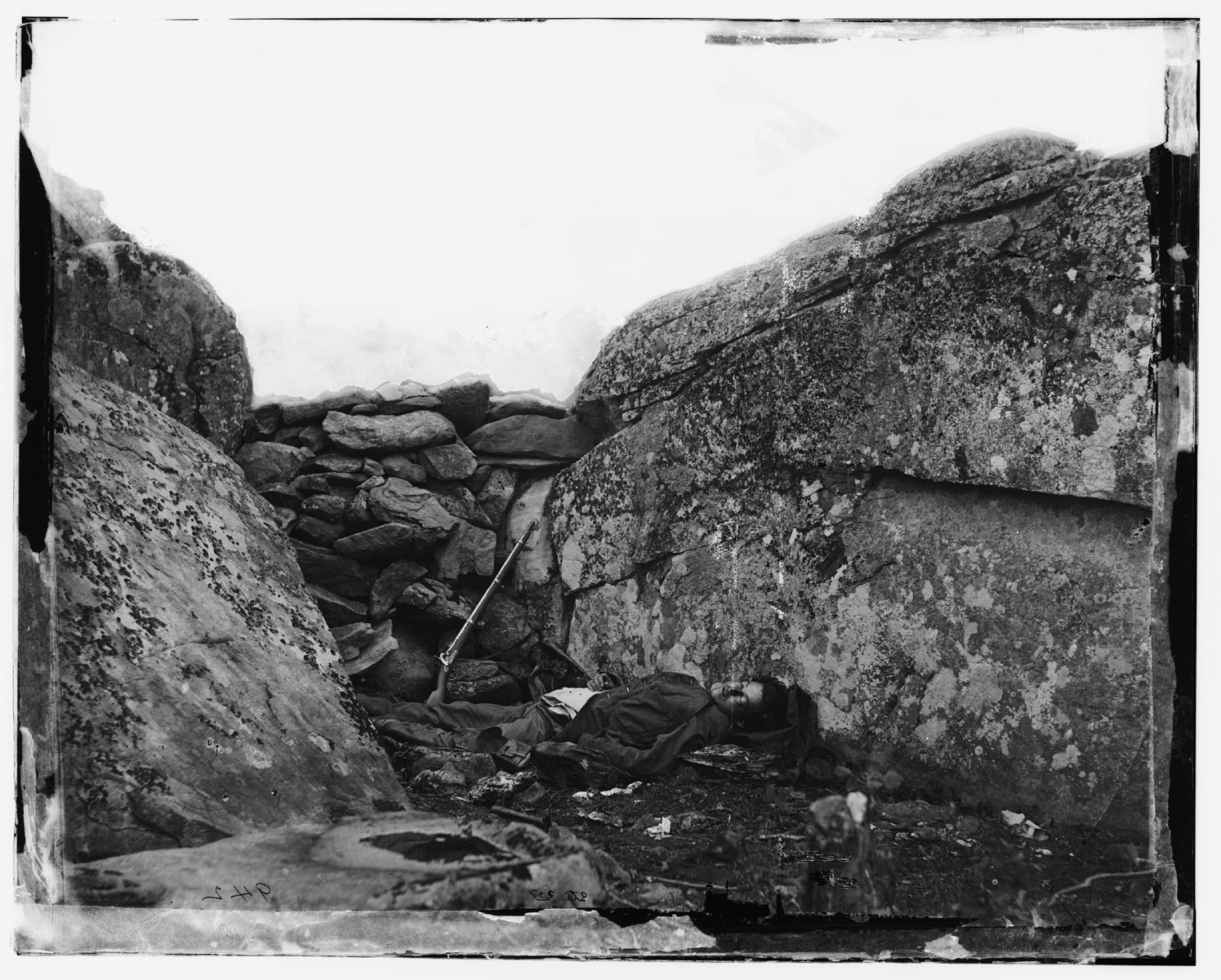Alexander Gardner, “Dead Confederate Soldier in Devil’s Den” (photograph), July 1863
Mathew Brady (1822–1896) rose to fame during the Civil War for both his portraits of military commanders and his photographs of the war. For the first time, Americans could see the violence of battle in photographic detail. A northern newspaper suggested that Brady had carried the brutal reality of the war home: “If he has not brought bodies and laid them in our dooryards and along streets, he has done something very like it.”
This photograph, taken by Alexander Gardner, one of Brady’s associates, depicts a Confederate sharpshooter who was killed at the Devil’s Den, a rocky hill at Gettysburg. But despite its vivid, photorealistic portrayal of the battlefield, the photograph suffers from some limitations, just like other sources. Some of those shortcomings sprang from the relatively crude technology: camera equipment was heavy, requiring a great deal of physical effort to lug into the field, limiting where photographers could go. Moreover, the camera’s slow shutter speeds dictated that it could capture only still scenes. Further, historical evidence suggests that Brady’s team staged the shot by moving the body (which seems to appear in several other photographs from other parts of the battlefield) and placing the rifle nearby to create a more compelling composition.

Evaluating the Evidence
Question
/s+t9YxQh39Izh2XrdFHWUCjd7hyvEjN9Db6UK+fVwpFQgo+vzKmVoyjPzDbJ6HTwRwa4vtiyquMs3DKqtcAtJIyho99qehbHJT12RImQyljx8wqWEeL8jvAPuu6KgsvXFWIiIMHnFA4zicBMwcVLVbMhqWUyIndaU7VCrFLQuxKcncYzbHfzuthA1DjW9kaotc7dQakspo3fgxtZois1CqciNwOGrqPL1j6QxFV+fuep1Wr+XciT3g4a7c03Nj8gOAvXf2U8nodo6Aq6dBzLA==Question
pEbzLn4wHKdXEU2UdDDWWjBOw8PctFx5Hr5grpQtRdLr3hTwcT92lb+6MGKZ3x4Cjk9FMSo/xcXFB1CkH1v68s5puRX3WH7mo2OVv2NwtPTTA42KBymSOjYm+6w/xSxVgJagPIvnby0cxS48Gp2vMturPdc=